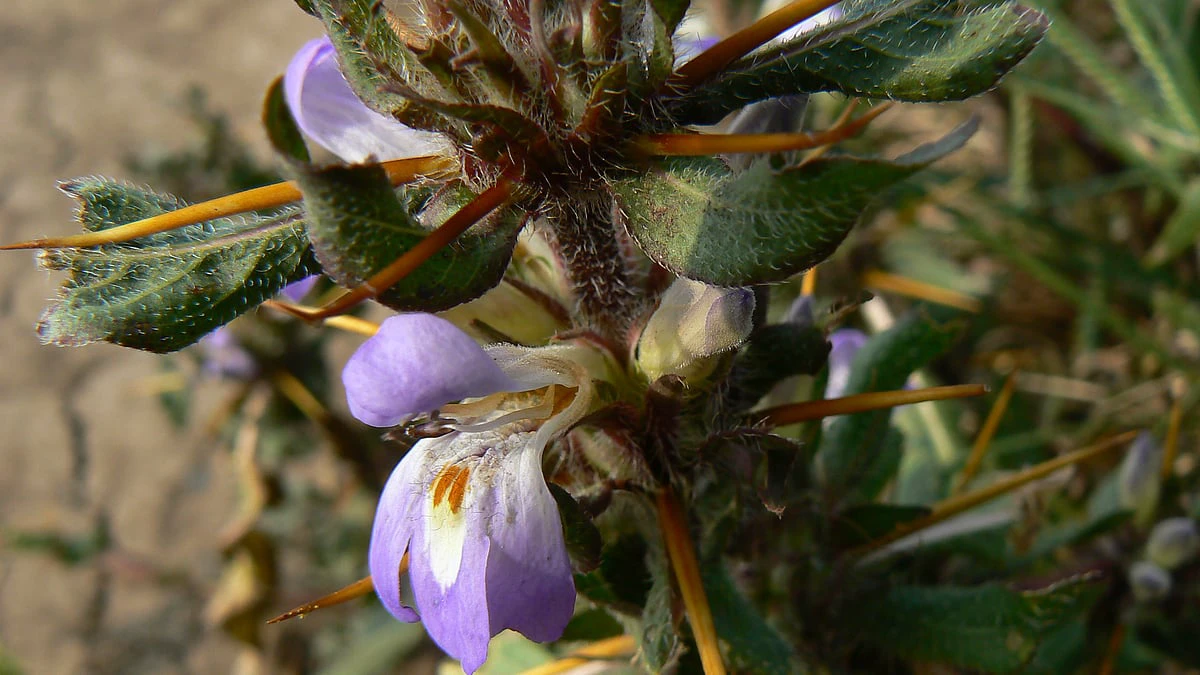Mother Nature has blessed the earth with the life-sustaining plant kingdom that offers health benefits and organic remedies in heaps. Among such priceless treasures, kokilaksha (Hygrophila auriculata) sits pretty as a useful herb.
Green glory
Also known as Ikshura, kokilaksha (the eyes of a cuckoo bird or the native koel) is a small aquatic herbaceous plant widely used for its therapeutic value. “This medicinal herb is highly cherished in Ayurvedic medicine. In English, it is often called the ‘long-leaved Barleria’. The plant has been traditionally regarded as a reinvigorating herb, used for replenishing vitality, improving reproductive health and maintaining overall wellness,” shares Dr. Renuka Dang, consultant dietitian, Ujala Cygnus Group of Hospitals.
Climatic map
Kokilaksha is indigenous to India, Sri Lanka, Bangladesh, Nepal and Myanmar. Plus, it is widely distributed across the tropical and subtropical regions of Southeast Asia, Africa as well as the Indian Ocean islands.
Kokilaksha thrives near water bodies, namely ponds, marshes and rice fields. It’s a powerful aphrodisiac. It grows best in a warm, humid climate, proliferating in swampy or even enduring waterlogged spots, riverbanks and pools with moist, loamy, slightly acidic or clayey soil. Additionally, kokilaksha can adapt to a well-irrigated garden soil.
“Good news is that it can also be nurtured in pots if kept in a partially submerged, water-retaining soil with a fair amount of sunlight,” reveals Amreen Sheikh, chief dietician at KIMS Hospitals, Thane.
Dietician Pranjal Kumat suggests that “while growing kokilaksha in pots or tubs, remember to use a large, shallow container stacked with rich organic soil and keep it consistently damp. The herb prefers from moderate to full sunlight. Propagation can be done through seeds or pruning to help elongate the stems.”
Echoing others, Dr. Dang affirms that “apart from growing naturally, Kokilaksha can be successfully cultivated in home gardens or nourished in pots, provided it receives regular watering, care and slight sunny rays to replicate its natural, muddy territory.”
Beautiful in sight
Kokilaksha’s features and colours are wonderful to look at and admire. It is an erect, branched annual or perennial herb with green, lance-shaped leaves, small violet-blue or lilac blossoms and spiny stems usually growing about 60-90 cm tall. The plant produces tiny, brown oval seeds enclosed in prickly capsules.
“The stems are verdant, cylindrical, slightly hairy, often with small thorns, while the bright green leaves are shiny, long, narrow, spear-shaped and of approximately 5-10 cm in size. The flowers are most recognisable for its attractive purple, bell-shaped petals, arranged in axillary whorls, whereas the roots are fibrous and pale brown in hue,” highlights Kumat.
Noticeably, the flowers occasionally have purple streaks, blooming along the leaf axils.
“A kokilaksha fruit is a small pod containing several minuscule seeds, which burst open when dry. The roots carry a mildly bitter taste, commonly used in Ayurvedic preparations,” stresses Dr. Dang.
 Medicinal use
Medicinal use
Kokilaksha is held in high esteem as a curative medicinal herb in Ayurveda and Siddha branch of science. It possesses a broad range of healing abilities and frequently recommended for its diuretic (increases urine flow), hepatoprotective (liver-protecting or regenerates liver cells), antioxidant, anti-inflammatory and re-energising effects. It is also known for its anti-diabetic and immunomodulatory actions.
“That’s why the plant is used in formulations to treat liver and kidney disorders, improve stamina, regulate metabolism and slow down ageing, thus making it one of the most predominant herbs in classical Ayurvedic texts,” validates Dr. Dang.
This multi-quality herb supports detoxification, fluid balance and metabolic health. Moreover, it is considered a tonic because of its antimicrobial and analgesic (pain-relieving) capabilities.
Health watch
Kokilaksha provides impressive health coverage for various systems of the body. It promotes kidney and urinary tract health, helps preventing infections and reducing inflammation, aids liver function, supports reproductive health, and boosts energy and immunity. It may also assist in managing joint pain, relieving fatigue and regulating blood sugar levels.
“Kokilaksha cleanses the urinary system by treating urinary retention, preventing formation of kidney stones and inhibiting bladder infections,” concedes Kumat.
It is used in tackling jaundice and strengthening liver enzyme function. Amid its multiple therapeutic benefits, reproductive health forms an important part. The herb intake increases sperm count and motility, thus combating impotence in men. In case of women, it controls menstrual cycles and drives fertility. “The plant has been traditionally used to lift sexual vitality in both men and women,” volunteers Dr. Dang.
Further, it offers relief to arthritic patients and alleviates gout. Skin health is also placed on its agenda as it purifies blood, and eases acne and eczema. Its antioxidant and anti-inflammatory compounds help protect the skin barrier from ageing and maintain a healthy glow.
Nutrition value
Every part of the Kokilaksha plant is rich in valuable nutrients and phytochemicals that are beneficial to the entire human body.
The leaves contain alkaloids, tannins and flavonoids that act as antioxidants and help reduce swelling and soreness. The stems are rich in terpenoids and phenolic compounds that fortify liver and detoxify the kidneys. The flowers are rich in glycosides and promote skin as well as reproductive health with its soothing impacts. The seeds have immense potential, containing proteins, fatty acids, sterols, minerals like calcium, magnesium and iron, plus mucilage that enhance stamina, fertility and digestion. The roots contain alkaloids, terpenoids, resins and saponins to reinforce the urinary tract and liver function.
“Kokilaksha contains steroids and amino acids too. The seeds are rich in proteins that bolster muscle and reproductive health, whereas roots help flush out toxins and excess fluids from the body,” inputs Sheikh.
“Moreover, the leaves contain iron and calcium to spur sturdy immunity for fighting contagious germs. The stems are also entrenched with minerals and phytosterols,” chips in Kumat.
Culinary delight
Kokilaksha can be included as a nutritious element in an array of vegetarian and non-veg dishes. In vegetarian dishes, its leaves can be added to soups, green chutneys or blended into herbal teas and tonics for detox gains. Its seeds are added to age-old items like milk-based kheer for stamina and reproductive support.
In non-vegetarian cooking, finely ground Kokilaksha seeds are occasionally added to meat stews or broths. This belongs to traditional Ayurvedic diet that aims to buoy up robustness and liveliness.
Kokilaksha Herbal Decoction
A decoction is a thick concentrated liquid churned out by steaming plant material like roots, bark and seeds to extract medicinal properties or flavours.
Boil 1 teaspoon of dried Kokilaksha powder in two cups of water until it reduces to half. Strain and drink the infusion once daily after meals. It helps cleanse the kidneys, support liver function and improve energy levels. Adding slivers of ginger or a dash of black pepper can elevate its absorption and health benefits.
Name Game
The plant’s botanical or scientific name is Asteracantha longifolia (or Hygrophila spinosa/Hygrophila auriculata) and it belongs to the family of Acanthaceae (a breed of ornamental flowering plants like shrubs, herbs and vines, commonly called the acanthus clan. Multiple species are found in tropical and subtropical areas of Asia and Africa). Bearing significant relevance in long-established medicines, such plants are held in high regard for their rejuvenating and restorative attributes.
While its Sanskrit synonym is Gokulakanta, it is dubbed Talmakhana in Hindi and Marathi, Neermulli in Tamil and Sinhala (Sri Lanka), Neermulli chedi/vayalchulli in Malayalam, Kulekhara in Bengali and Godugu-gaddi or Gruddi-kamanchi in Telugu.
